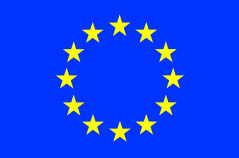Thanks to the increasing effectiveness of the EU’s rapid alert system for non-food dangerous products („RAPEX”), a record 2,244 unsafe products were banned, withdrawn from the market or recalled from consumers in 2010 (up 13% compared with 2009), according to the 2010 annual RAPEX report published today.
fot. Morguefile.com
Member States have upped their game and European businesses are also taking their responsibilities in the consumer product safety area more seriously, with a marked increase (200%) in the use of the dedicated rapid alert system for business (’GPSD Business Application’). Safety at source has become a key focus – with attention now moving right back to the factory floor (design and manufacturing), and work with international partners is growing, in particular with China.
John Dalli, Commissioner in charge of Health and Consumer Policy, said: „Safety at source is key to product safety, especially given the new realities of globalisation. Companies must design out safety risks from the start, manufacturers must manage the quality of the manufacturing process, checking the final products coming off the conveyor belt. Partnerships are beginning to reap results, both in Europe, and in countries that supply us, such as China. This means we can get on with the critical work to be done„.
RAPEX system increasingly effective
Since the introduction of RAPEX in 2004 (when the General Product Safety Directive, was transposed into the national laws), notifications have increased from 468 (2004) to 2,244 (2010). The increased capacity and efficiency is attributed to:
– more active product safety enforcement by national authorities, including through specific projects;
– better allocation of resources;
– greater awareness among businesses of their obligations;
– enhanced cooperation with third countries, in particular China;
– network-building and training coordinated by the European Commission.
The focus for the future will be on quality and usefulness of the notifications.
As regards the countries of origin, the number of notifications on products from China sent through RAPEX showed a slight decrease (of 2%, from 60% in 2009 to 58% in 2010. 17% were of European origin. 10% were of unknown origin and 15% were from other countries.
All Member States involved
All Member States participated in the RAPEX system by detecting and notifying new dangerous products and ensuring appropriate follow-up actions to the information received.
Half of the participating countries further increased their activities in the system in 2010. The most active countries were Germany (204 notifications), Bulgaria (192 notifications), Hungary (191 notifications), Cyprus (178 notifications), and Greece (159 notifications). Notifications sent by these countries represent 47% of all notifications on products posing a serious risk sent via the system.
Clothing and textiles, toys, and motor vehicles top the list
Clothing and textiles (625 notifications) were the most frequently notified products (suffocation and irritation risks) followed by toys (488 notifications), (mainly choking risk), and motor vehicles (175 notifications), (risk of injury), which together accounted for 66% of all notifications on products posing a serious risk in 2010. Electrical appliances (158 notifications) became the fourth most frequently notified category of product (risk of electric shock).
Results of the EU market surveillance check on helmets
In 2010, market surveillance authorities in 11 countries conducted a specific check of the safety of helmets for leisure purposes (for alpine skiers, snowboarders, cyclists, skateboards, roller skaters, horse riders). They inspected 367 helmets for compliance with relevant safety legislation.
With regard to requirements for labelling and instructions for use, 63% of the sample were non compliant. With regard to safety parameters specifically, 40 helmets (identified by expert market surveillance experts as potentially non-compliant) were sent to a laboratory for full testing of safety aspects including: field of vision, shock absorbing capacity, suitability of the retention system which keeps the helmet in place. The results revealed that nearly half of the tested models did not comply with the relevant standard for one or more of the above parameters.
The main aim of the project (co-ordinated by PROSAFE, the EU network of surveillance authorities ) was to reduce the number of unsafe helmets on the EU market. It also enabled Member States to gain experience in working together for better surveillance and enforcement of the safety rules. National authorities will intensify their work to ensure compliance with the relevant safety requirements and to inform and educate economic operators and consumers.
For more information, please see:
MEMO/11/288
Link to our website: http://ec.europa.eu/consumers/safety/news/index_en.htm



